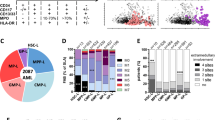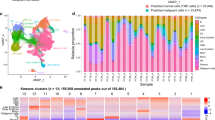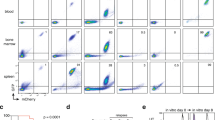Abstract
Abnormal self-renewal and differentiation are defining features of acute myeloid leukemia (AML). Using models of hematopoiesis, we show that persistent self-renewal that ignores differentiation signals can be produced through two distinct pathways. One pathway prevents repression of stem cell genes, producing daughter cells that resemble parental stem cells despite differentiation inducing lineage-specifying factor or cytokines. Runx1 deficiency, a frequent abnormality in AML, demonstrates the second pathway, which allows cytokine/lineage-specifying factor mediated repression of stem cell genes but impairs subsequent activation of differentiation genes that terminate transit-amplification, producing self-renewal in daughter cells that do not resemble the parental stem cell. Use of this pathway by AML cells has therapeutic relevance: cell-fate regulation by the chromatin-modifying protein DNMT1 is differentiation-phase dependent. In the post lineage-commitment differentiation-phase at which AML cell self-renewal occurs, DNMT1 has an opposite role than in normal stem cells. Consequently, DNMT1 depletion, using a clinically applicable method, terminates AML cell self-renewal but increases normal stem cell self-renewal.
Similar content being viewed by others
Article PDF
Author information
Authors and Affiliations
Corresponding author
Rights and permissions
About this article
Cite this article
Negrotto, S., Hu, Z., Link, K. et al. A Therapeutically Relevant Difference in Leukemia and Normal Stem Cell Self Renewal. Nat Prec (2009). https://doi.org/10.1038/npre.2009.3044.1
Received:
Accepted:
Published:
DOI: https://doi.org/10.1038/npre.2009.3044.1



